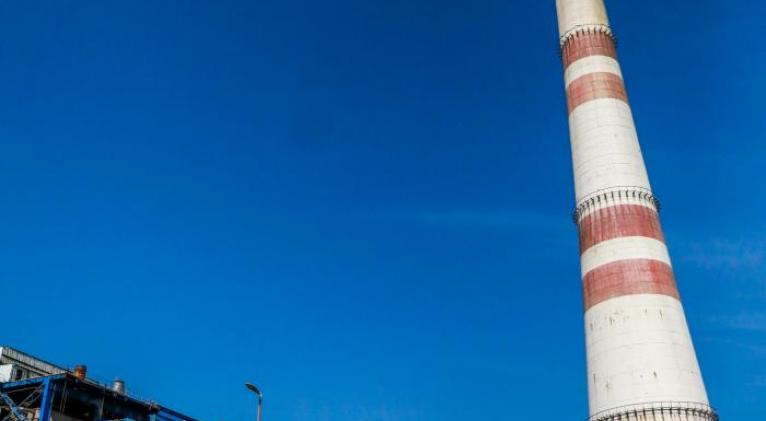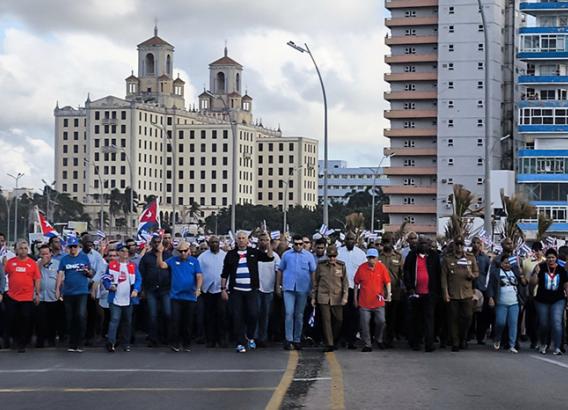Will There be a Recovery From the Current Electricity Generation Debacle Soon?
especiales

Unit 1 of the Lidio Ramón Pérez thermoelectric plant in Felton, Holguín, is close to synchronizing with the National Electric System (NES) this weekend, Vicente de la O Levy, Minister of Energy and Mines, told the press yesterday.
He explained that this unit, one of the largest in the system, had experienced a critical situation that required shutting it down and proceeding with its repair.
It was planned for 20 days, but "planning is done, and then, when it starts, it's corrected, and time is kept in mind; because when the equipment is new, it's easier to plan, but if it's equipment that's been in operation for 40 years, when you open it, you discover broken things. However, in this case, the opposite happened, positively.
"We planned for 20 days, and everything indicates that it could be connected to the system by next weekend."
INCREASING DEFICIT, THE MOST CRITICAL SITUATION
The Minister of Energy and Mines explained that, when Felton 1 comes online, the most critical situation must improve; this means returning to the levels of impacts we had before its decommissioning. It’s improving, but there is still a high deficit, he noted.
Before Felton's decommissioning, the system was very weak, he commented, and this exacerbated the deficit, coupled with a breakdown in a seawater pipeline at the Mariel sites, with a capacity of 100 megawatts. "That problem has now been solved," he stated.
He added that, in coordination with the military industry, this pipeline system was completely repaired, and at this time, before this conference, it was generating 98 MW and should reach 112, a relief, no doubt.
The decommissioning of units in Renté and Nuevitas also occurred, he added. This resulted in this week being extremely strained, with a deficit of more than 2,000 MW on Tuesday, he exemplified.
WHAT HAPPENED IN HAVANA ON MONDAY?
Regarding what happened Monday afternoon in the capital, De la O Levy explained that, given the conditions under which the system had been operating, it fluctuated due to the failure of a unit in Nuevitas, and to prevent it from going down completely, the National Office colleagues acted urgently, opening the circuits in Havana, the highest consumers, to stabilize the large fluctuation that occurred.
This outage in the capital lasted approximately one hour, was opened at 5:00 p.m., and at 6:00 p.m. the circuits were restored, and the level of impact returned to that which existed before the event occurred.
PROJECTIONS FOR THE COMING DAYS
The head of the Ministry of Energy and Mines (MINEM) emphasized that, once Felton 1 is incorporated, with the current generation and solar farms, the daily impacts could be reduced again to less than 1,000 megawatts.
"Now is the time of year when these impacts during a single moment of the day are increasingly rapid and shorter," he commented. "In the summer, a 1,700 MW impact lasts for hours; in the winter, a 1,700 MW impact lasts for minutes. Demand rises very quickly, and it also falls very quickly," he explained.
Regarding fuel, he argued that this week there has not been a critical situation, although there have been some shortages in some regions, and lubricants are becoming scarce at a level that is also recovering. "It doesn't mean that fuel prices are stable," he clarified, because there is an extremely tense situation with financing.
SOLAR FARMS AND FREQUENCY REGULATING BATTERIES
To date, we have installed 656 MW of the 1,000 MW we planned to install this year; almost every week, one or two sites of this type are being synchronized and inaugurated in the country, he expressed. "Only two parks remain to begin construction," all the others are progressing according to schedule, he added.
Regarding energy storage, De la O Levy explained that, in addition to each contract for 1,000 MW of solar parks, 100 MW of storage was contracted to regulate frequency.
The two are different technologies: the production of photovoltaic solar panels is already done in series, like producing screws, he gave as an example; however, the batteries are produced with detailed engineering, "like a suit tailored to the place where they will be installed."
These batteries are already finished and paid for; all the engineering and factory inspections are being completed for their shipping process. Resources for this project are already in the country, he added.
He clarified that, as has been explained on other occasions, even if the solar farm project had not been executed, the Cuban electrical system still needed batteries that could regulate the frequency to stabilize it, given that "our old thermoelectric plants have necessarily lost the ability to regulate frequency." He added that "setting a thermoelectric plant to regulate frequency increases the strain on that machine, which is also generating electricity."
Once these batteries are installed, the system's situation will substantially change, in terms of high-frequency tripping, as these will decrease considerably, not only for the customer, but also for the stability of the NES.
COMPLETING MAINTENANCE
"We plan to continue carrying out the maintenance we are performing in Céspedes and East Havana," he stated.
In the case of Renté 5, which has shown unstable behavior, he explained that the unit is already in the process of assimilating the intervention, as it has already completed maintenance after a full year.
Why the assimilation process? When a major repair is carried out, more than 1,000 points of the thermoelectric plant are worked on, which, later, always require "fine-tuning," which is what is detected once the machine is operating and is corrected.
In the case of Mariel 6, it also underwent repairs and was in operation for a month or so, with the same irregularities as Renté 5, until the "fine-tuning" was completed, and the unit was now completely stabilized, he explained.
The adjustment will then be completed at Renté, and Céspedes 4, a very reliable unit for the system's operation, will be synchronized, as will the machine in East Havana, which has also been undergoing maintenance for a year. "All of this will happen in the remainder of September and October," he stated.
Regarding the transfer of machine maintenance, the Minister critically acknowledged that the synchronization of the units that had been planned for the summer could not be achieved.
"They were transferred to us because they are units that underwent a diagnosis, and even planning, between foreign experts and our best experts"; but when you open a unit that's been in operation for 40 or 50 years, you find other things and other situations," he explained.
Therefore, it was decided to extend maintenance, as it would be very painful to close a unit and complete maintenance knowing that you left something broken, only to then have to shut down the unit again because of it, he added.
That's what happened to us in Céspedes, where there were also quality errors that were rectified along the way, because we have to be honest, "because that can happen, but our electrical workers are engaged in a fight with commitment and a sense of belonging."
He said that, in the summer, the main reason why the commitment to reduce disruptions could not be met was the lack of fuel.
Added to this was the removal of the trucks in August, which increased the deficit. This withdrawal was said to be for commercial reasons. "All the Cuban people know, because they are intelligent, that the reason is that payment could not be made," he asserted.
De la O Levy referred to the blockade report presented by the Foreign Minister yesterday, in which he stated that "five hours of blockade are equivalent to the financing needed for the capital repair of the Antonio Guiterras thermoelectric plant: $100 million."
"We may have inefficiency, but more than 95% of the real cause is the lack of financing, because it has been proven that the electrical system workers do not rest, and there’s a real lack of resources. If we don't have the $100 million, we cannot provide capital maintenance to Guiterras."
Translated by Amilkal Labañino / CubaSí Translation Staff














Add new comment